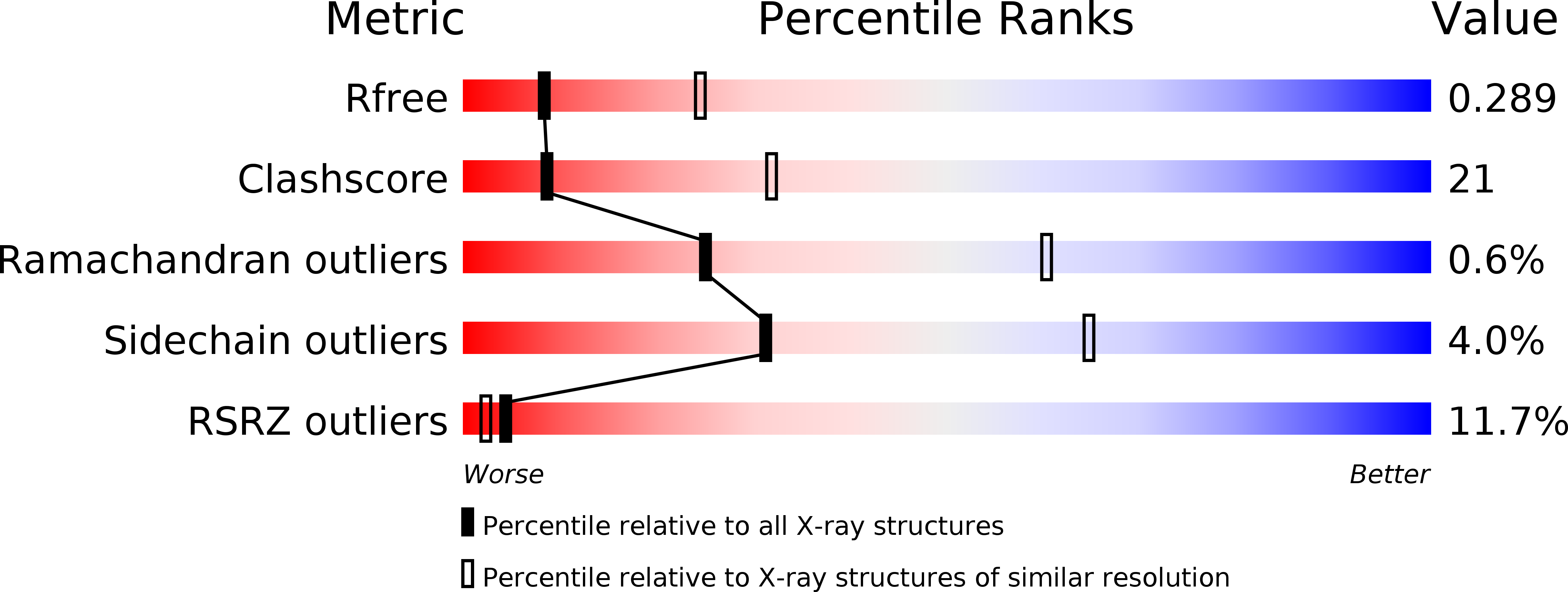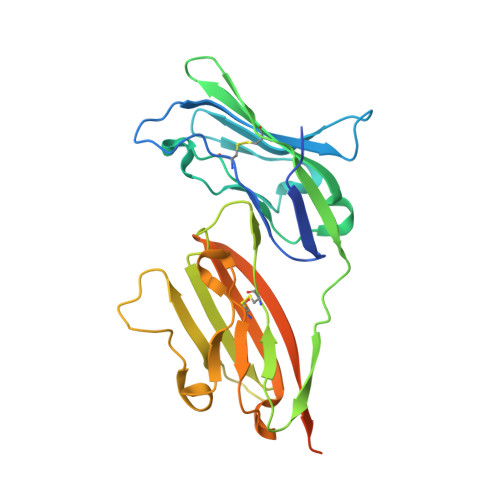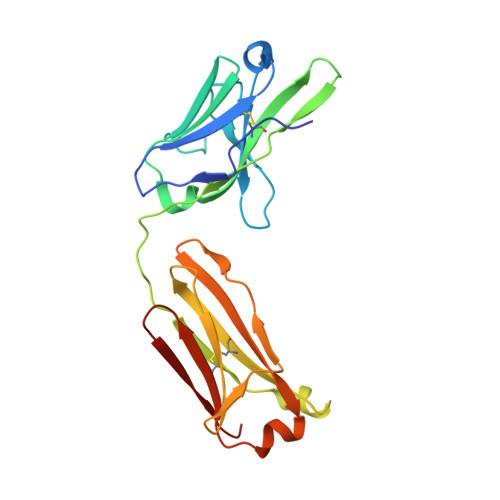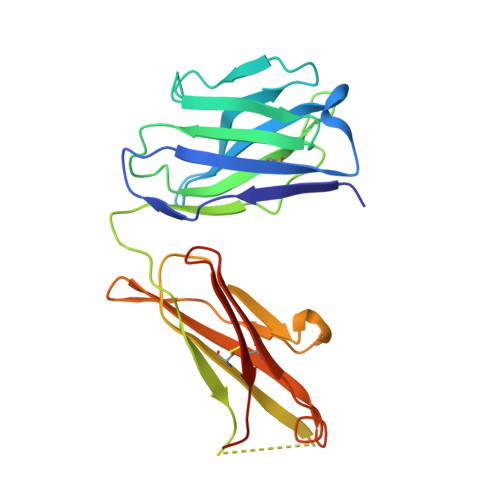Molecular insights into gamma delta T cell costimulation by an anti-JAML antibody.
Verdino, P., Witherden, D.A., Ferguson, M.S., Corper, A.L., Schiefner, A., Havran, W.L., Wilson, I.A.(2011) Structure 19: 80-89
- PubMed: 21220118
- DOI: https://doi.org/10.1016/j.str.2010.10.007
- Primary Citation of Related Structures:
3MJ9 - PubMed Abstract:
γδ T cells bridge innate and adaptive immunity and function in immunosurveillance, immunoregulation, tumor cell recognition, and as first line of defense against microbial infection. Costimulation of epithelial γδ T cell activation by the JAML receptor can be induced by interaction with its endogenous ligand CAR or by binding of the stimulatory antibody HL4E10. We, therefore, determined the crystal structure of the JAML-HL4E10 Fab complex at 2.95 Å resolution. HL4E10 binds the membrane-proximal domain of JAML through hydrophobic interactions that account for nanomolar affinity and long half-life, contrasting with the fast kinetics and micromolar affinity of the hydrophilic CAR interaction with the membrane-distal JAML domain. Thus, despite different binding sites and mechanisms, JAML interaction with these two disparate ligands leads to the same functional outcome, namely JAML triggering and induction of cell signaling. Several characteristics of the HL4E10 antibody might then be harnessed in therapeutic applications, such as promoting healing of acute or chronic wounds.
Organizational Affiliation:
Department of Molecular Biology, The Scripps Research Institute, 10550 North Torrey Pines Road, La Jolla, CA 92037, USA.


















